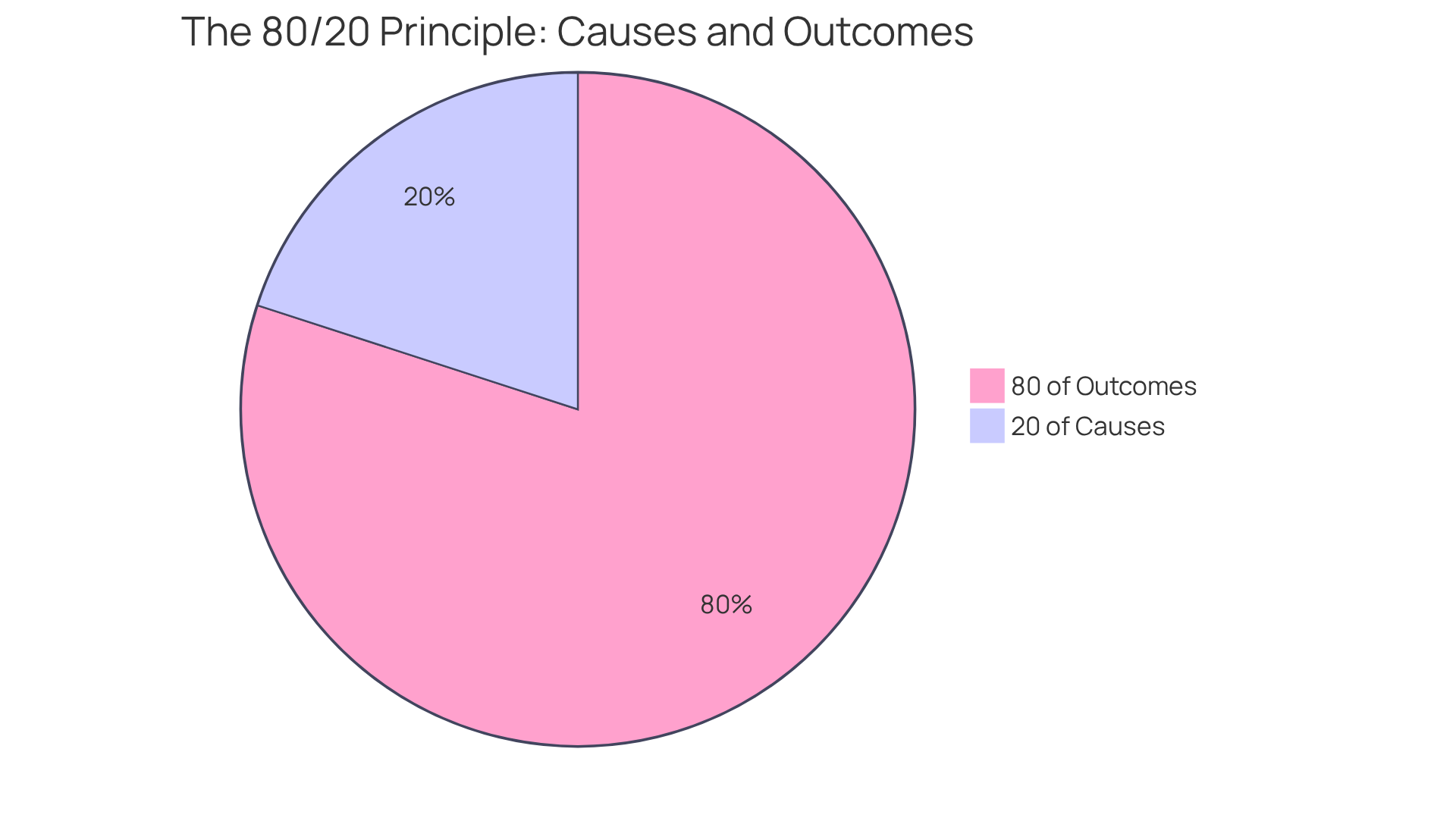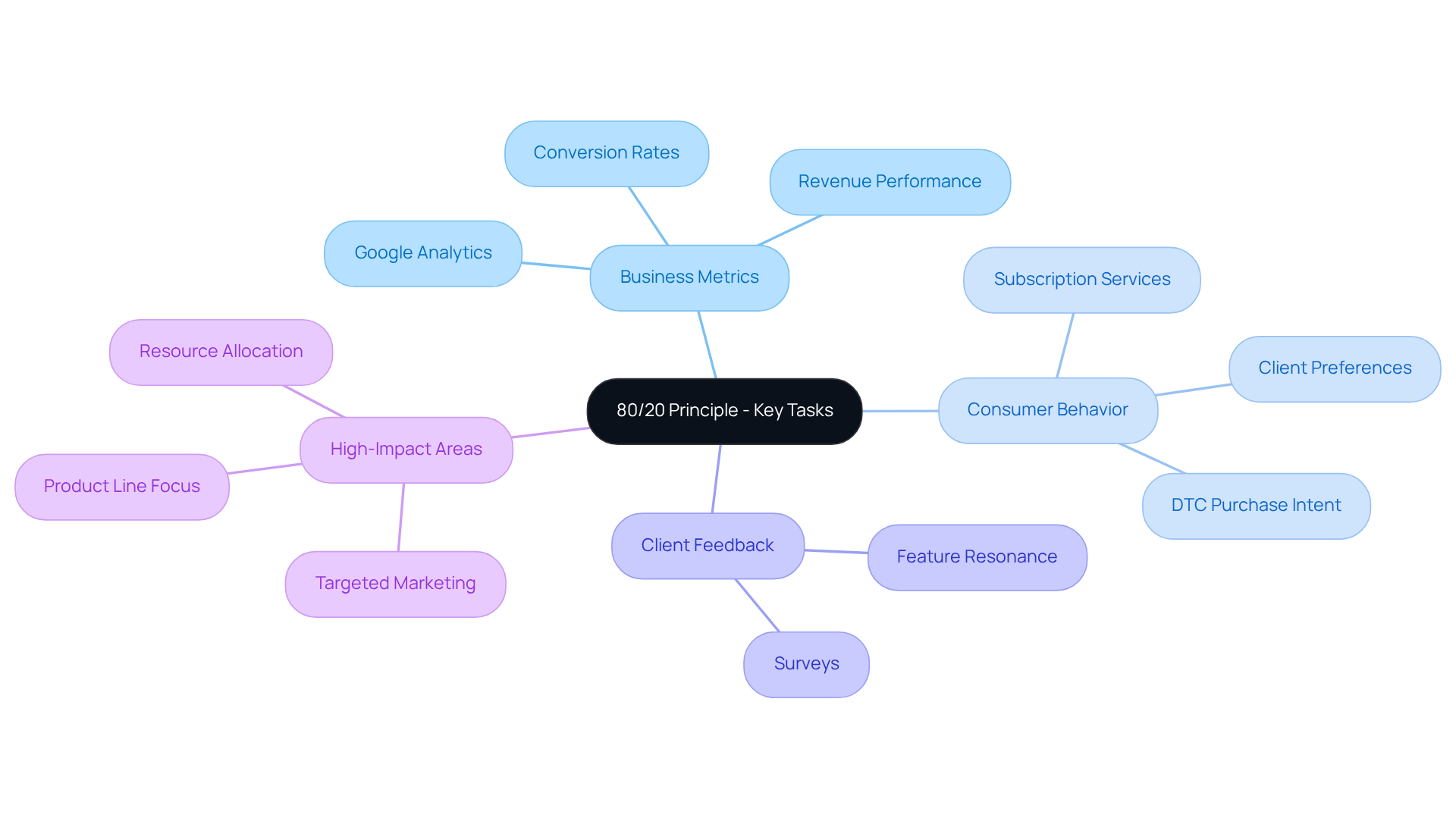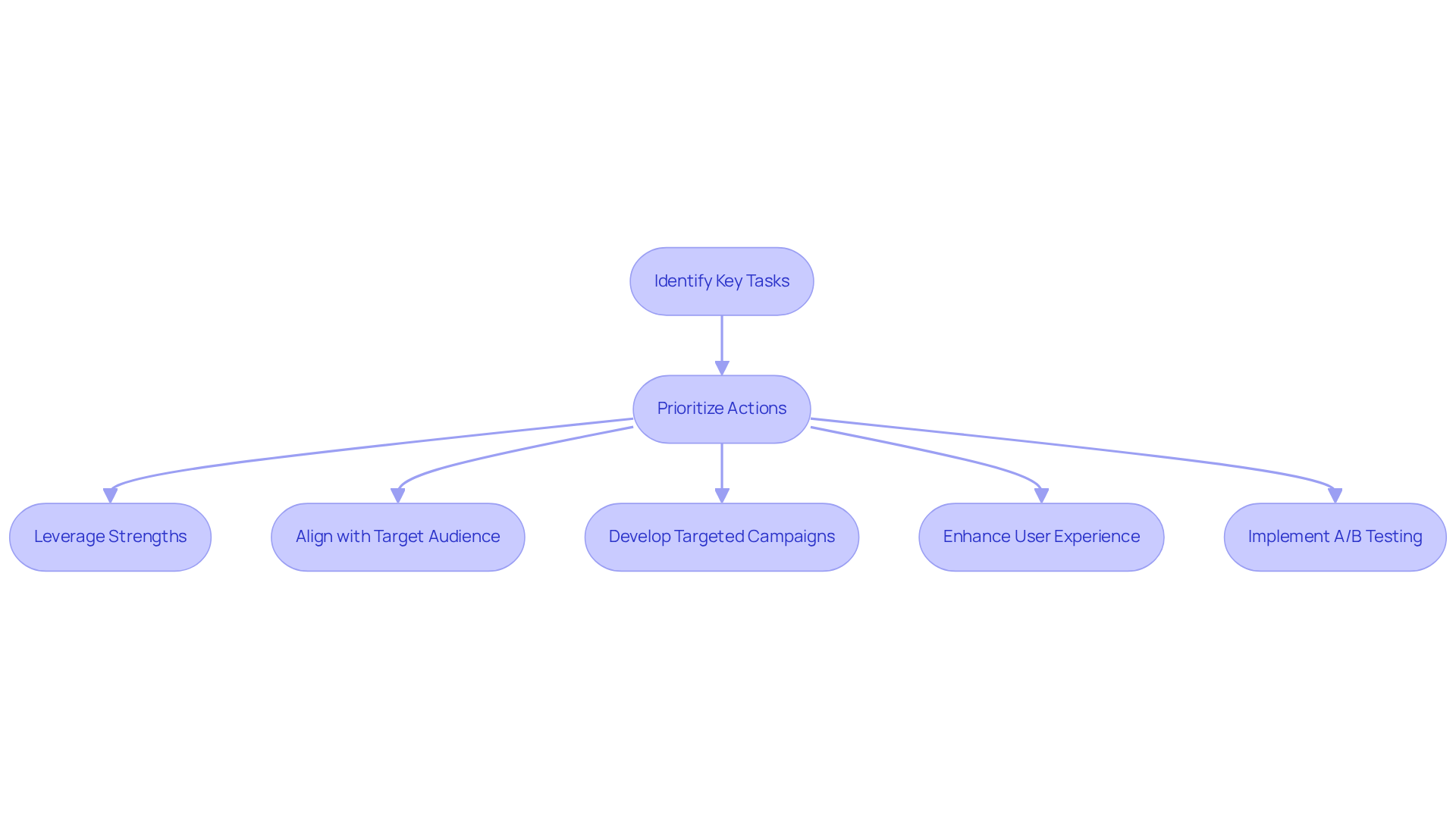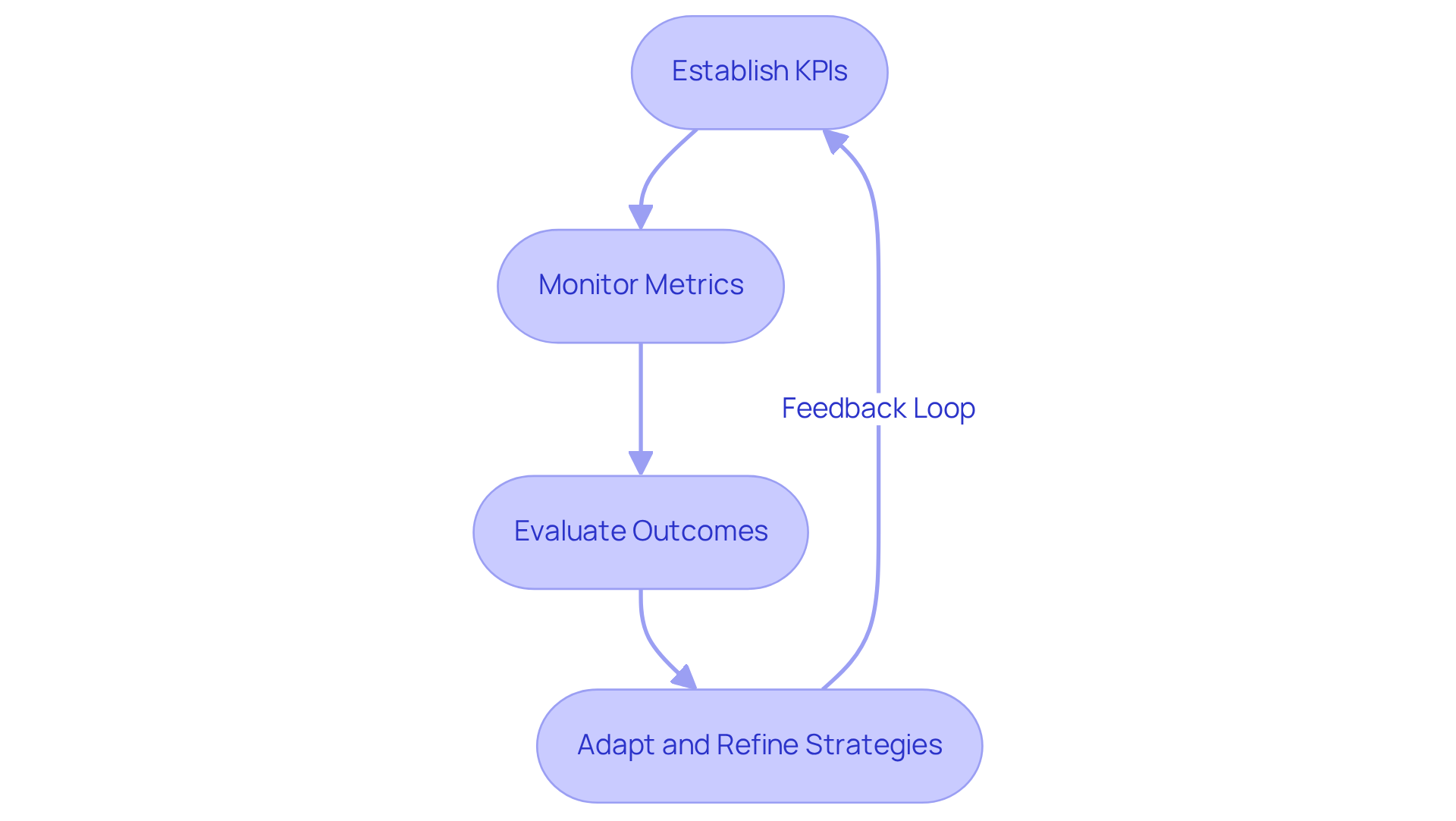
Overview
This article examines how Direct-to-Consumer (DTC) brands can effectively harness the 80/20 principle, also known as Pareto Analysis, to catalyze growth. By identifying and prioritizing the critical products, customers, and strategies that contribute to the majority of their results, brands can significantly enhance their performance. Concentrating efforts on the 20% of factors that generate 80% of outcomes allows these brands to optimize resource allocation, increase profitability, and improve overall business performance. This is achieved through targeted marketing initiatives and ongoing evaluation of key performance indicators, ultimately driving sustained success.
Introduction
The 80/20 principle, widely recognized as Pareto analysis, uncovers a profound reality: a mere 20% of efforts frequently generate 80% of results. For direct-to-consumer (DTC) brands, this revelation transcends mere statistics; it serves as a strategic compass guiding them toward sustainable growth and profitability.
By concentrating on the most impactful products, customers, and marketing strategies, brands can streamline operations and refine their decision-making processes.
Yet, the challenge remains: how can brands accurately pinpoint these critical areas amid an overwhelming sea of data? Effectively harnessing this principle is crucial for unlocking their true potential.
Understand the 80/20 Principle: The Foundation of Pareto Analysis
The 80/20 principle Pareto asserts that 80% of outcomes stem from just 20% of causes. Within the realm of DTC brands, this translates to a limited selection of products, clients, or marketing strategies driving the majority of revenue. To effectively harness this principle, it is essential to acknowledge its significance in your business operations. For instance, scrutinizing your revenue data can reveal which items contribute most substantially to your income. Notably, 80% of sales typically originate from merely 20% of your customer base, highlighting the necessity of cultivating these high-value relationships. Grasping this principle empowers you to concentrate your efforts on areas that yield the highest returns, ultimately facilitating more efficient resource allocation and strategic decision-making.
Implementing Pareto Analysis can yield considerable enhancements in resource allocation and strategic decision-making. By directing efforts toward the most impactful areas, companies can bolster profitability and refine operations. Continuous analysis and adjustment are imperative; as Richard Koch aptly states, 'If you’re going to spend time on something, spend it on what matters most.' This emphasis on the vital few actions that produce the most significant results can alter a business's growth trajectory. Moreover, leveraging this principle in marketing can aid in identifying the most effective campaigns, allowing companies to optimize their strategies for maximum ROI.
In the e-commerce sector, successful applications of Pareto Analysis include businesses that have tailored their marketing initiatives to engage their most loyal customers, leading to heightened sales and improved customer retention. For example, the case study 'Optimizing Marketing Strategies with the Pareto Principle' demonstrates how analyzing traffic sources can pinpoint the most effective campaigns. By prioritizing the top 20% of products that account for 80% of revenue, DTC companies can align their marketing and operational strategies with their most profitable offerings. This focused methodology not only enhances efficiency but also fosters sustainable growth, reinforcing the 80/20 principle Pareto as an indispensable tool for any DTC company striving to excel in a competitive landscape. Furthermore, it is crucial to remain cognizant of common pitfalls in implementing the 80/20 principle Pareto, such as perfectionism and neglecting data-driven decision-making, to ensure the successful adoption of this principle.

Identify Key Tasks: Pinpoint the 20% That Drives 80% of Results
To identify the 20% of tasks that drive 80% of your results through the 80/20 principle Pareto, initiate a thorough analysis of your business metrics. Essential tools like Google Analytics enable you to evaluate which products yield the highest revenue and which marketing channels deliver the best conversion rates.
As of 2023, a considerable number of DTC brands leverage Google Analytics to gain insights into client behavior and revenue performance, empowering them to make informed, data-driven decisions. Notably, according to Diffusion's 2020 Direct-to-Consumer Purchase Intent index, 25% of Americans regularly engage in DTC purchases, underscoring the necessity of understanding consumer preferences.
Additionally, gathering client feedback through surveys can reveal which features or services resonate most with your audience. This insight is particularly relevant as subscription services have emerged as a dominant element in DTC transactions, offering ongoing value and fostering customer engagement.
Compile a list of these high-impact areas and prioritize them in your strategic plan. For example, if a specific product line represents a substantial portion of your sales, focus your marketing efforts on enhancing its visibility and appeal. This targeted strategy not only optimizes resource allocation but also boosts overall profitability, aligning perfectly with the 80/20 principle Pareto.

Prioritize Actions: Focus on High-Impact Strategies for Growth
Once you have identified the key tasks, the next step is to prioritize actions that will drive growth. Focus on strategies that leverage your strengths and align with the needs of your target audience. If your analysis indicates that a specific demographic is particularly engaged with your brand, it is prudent to develop targeted marketing campaigns tailored to that group.
Furthermore, allocate resources to enhance the user experience on your website, especially for the products that yield the highest revenue. Implement A/B testing as a continuous refinement tool for your strategies.
By concentrating on these high-impact approaches guided by the 80/20 principle Pareto, you will maximize your growth potential and significantly improve your overall conversion rates.

Measure and Adjust: Evaluate Outcomes to Refine Your Approach
To ensure the effectiveness of your prioritized actions, it is imperative to establish key performance indicators (KPIs) that measure outcomes. Consistently evaluating these metrics is crucial to determining the impact of your strategies on conversion rates and total revenue. Monitor changes in:
- Sales volume
- Average order value
- Client retention rates
to gain valuable insights. Should specific methods fail to yield the anticipated results, be prepared to adapt and refine your approach. Leverage customer feedback and analytics to guide your decisions. By continuously measuring and refining your strategies, you can sustain a competitive edge and drive sustainable growth for your DTC brand.

Conclusion
Mastering the 80/20 principle, or Pareto analysis, is not just beneficial; it is essential for the growth and success of direct-to-consumer (DTC) brands. Recognizing that a small fraction of products, customers, or strategies can yield the majority of results enables businesses to optimize their resources and concentrate on high-impact areas. This targeted approach enhances efficiency and drives sustainable growth in a competitive landscape.
Key insights from this discussion underscore the necessity of identifying the critical 20% that contributes to 80% of outcomes. Techniques such as:
- Leveraging analytics tools
- Gathering customer feedback
- Prioritizing high-impact strategies
are vital in this process. By continuously measuring performance and adjusting tactics based on data-driven insights, DTC brands can ensure they remain agile and responsive to market demands.
Ultimately, embracing the 80/20 principle empowers brands to focus on what truly matters for their growth trajectory. By prioritizing actions that align with customer needs and business strengths, DTC companies can maximize their potential and achieve lasting success. Implementing this principle transcends mere strategy; it embodies a mindset that fosters innovation and resilience in an ever-evolving marketplace.
Frequently Asked Questions
What is the 80/20 principle in the context of Pareto Analysis?
The 80/20 principle asserts that 80% of outcomes come from just 20% of causes, meaning that a small selection of products, clients, or marketing strategies drives the majority of revenue for businesses.
How can businesses apply the 80/20 principle effectively?
Businesses can apply the 80/20 principle by analyzing revenue data to identify which products or customers contribute most significantly to income, allowing them to focus efforts on high-value relationships and areas that yield the highest returns.
What are the benefits of implementing Pareto Analysis?
Implementing Pareto Analysis can enhance resource allocation and strategic decision-making, leading to increased profitability and improved operational efficiency by directing efforts toward the most impactful areas.
How can the 80/20 principle influence marketing strategies?
The principle can help identify the most effective marketing campaigns and optimize strategies for maximum return on investment (ROI) by focusing on the top 20% of products or customers that generate 80% of revenue.
Can you provide an example of successful application of Pareto Analysis in e-commerce?
One example is businesses that tailor their marketing initiatives to engage their most loyal customers, resulting in increased sales and improved customer retention, as demonstrated in the case study 'Optimizing Marketing Strategies with the Pareto Principle.'
What common pitfalls should businesses avoid when implementing the 80/20 principle?
Common pitfalls include perfectionism and neglecting data-driven decision-making, which can hinder the effective adoption of the 80/20 principle in business operations.
FAQs











